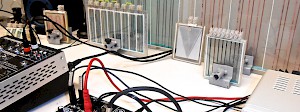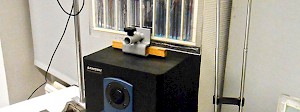Tune In Drop Out Steven Tevels Sep 2014 -
During his residency at OVERTOON, September to October 2014, Steven Tevels intends to carry out research and experimentation with electrochemical and electric photocells. He will create an interactive light/sound installation interacting with its environment. Under certain conditions, light energy is converted into sound energy. The installation can detect light sources to generate sound.
This work, consists of multiple photocells, capturing and converting light into sound by means of electric pulses. These cells feed on light lumen and translate this electromagnetic energy straight back into audible sound waves. Hereby the sound intensity depends on the light intensity, so consequently the absence of light also means logically that no sound remains audible.
Ideally, Steven Tevels’ intentions are to set up a group of photocells in an outdoor or indoor space, possibly public, under multiple light conditions which can facilitate a diversity of tones. These tones can fluctuate between a constant monotonous whistle sound to a more varied staccato rhythm. The timbre is created by alterations in the light frequencies and variable environmental conditions.
This research questions the ways we relate to and interact with our immediate surroundings. Mainly, light, sound and movement shape our environment and the way we respond to it. They define the atmosphere as well as the emotional value of a space or landscape. This auditive installation interacts with its environment. This cluster of photocells can receive light lumen and translate them directly into audible sound waves. Thus, it is a translation of wireless energy into vibrating audible energy. This piece is partly inspired by Nikola Tesla’s words: "The transmission of Electrical Energy Without Wires as a Means for Furthering Peace.” (in Electrical World and Engineer 1905).



